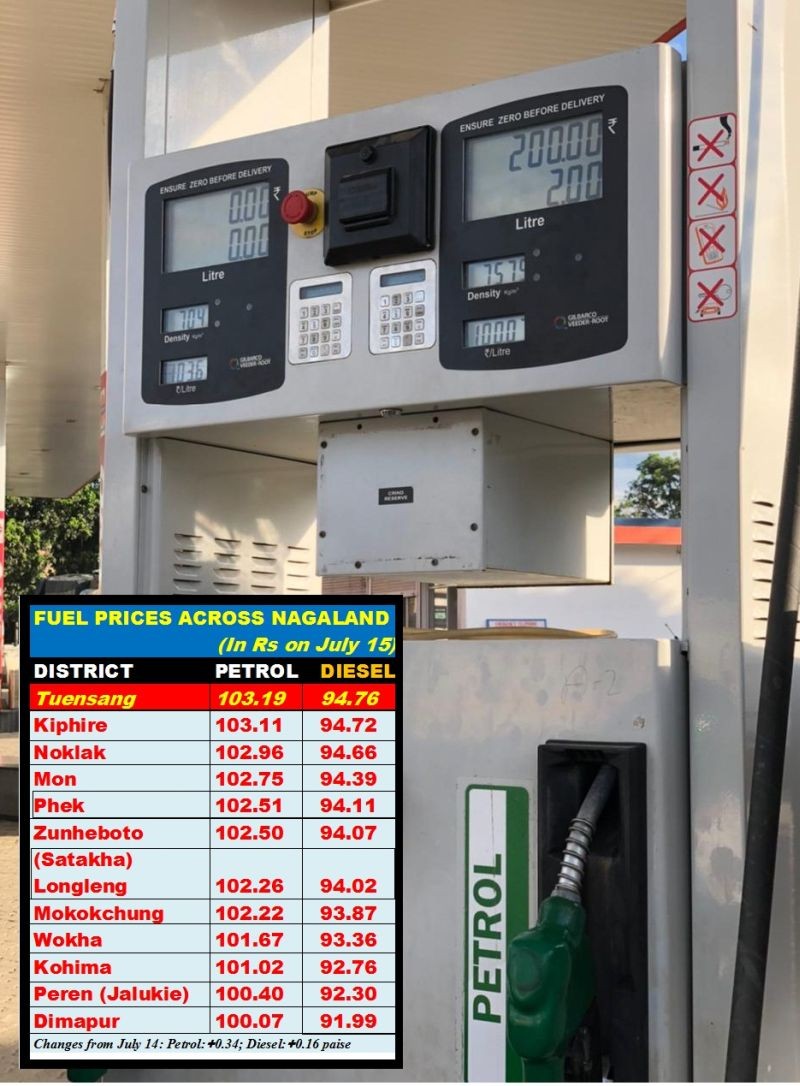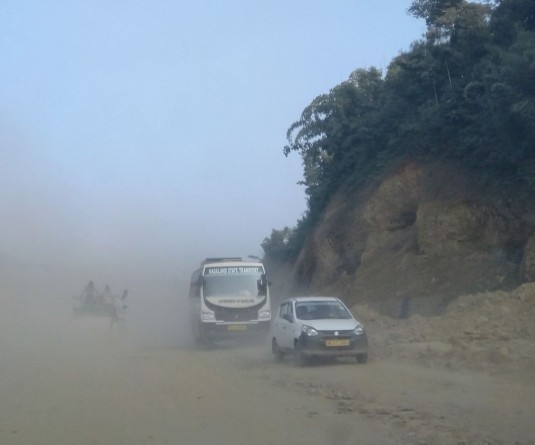
Morung Express News
Dimapur | July 15
With petrol price touching Rs 100 a-litre across Nagaland on July 15 amid the lockdown imposed to prevent the spread of COVID-19, consumers as well as those dependent on fuel for their daily income are dealing with a double blow.
With oil marketing companies (OMCs) increasing the prices by 34.0 paise per litre on July 15, petrol breached the psychological Rs 100 mark in Dimapur, the last district where it was earlier available below the threshold.
Accordingly, it was increased from Rs 99.73 on July 14 to Rs 100.07 per litre on Thursday in Dimapur.
“Continued rise in fuel prices have affected my income sharply,” informed Chandan, an auto driver, at a fuel outlet in Dimapur’s Tajen Ao Road.
“On one hand, I can operate my vehicle only on alternate days due to prevailing COVID-19 SOPs; while on the other hand, the prices keep rising,” he told The Morung Express.
“The situation was precarious for a common person like me,” Chandan maintained, further noting that the impact is not a matter of Rs 100 or 200 per day.
“At one filling, now I am spending around Rs 500-600, leaving little for my consumption and saving,” he maintained. “The government should do something for the common person,” he added.
At a fuel outlet along National Highway-29 near 5th Mile, another auto driver seemed to have resigned to his fate.
“What can we do? It is those at the helms of affairs to do something and alleviate the burden of common person,” he said.
Sharing similar concern, an attendant at the outlet said that they too are ‘feeling the pinch’ despite working there.
“We too have a family to feed and travel daily,” he underscored, elaborating on the cascading impact of the rise in fuel prices.
Nungsang, who commutes to office daily from Padumpukhuri to Dimapur main city centre, estimated on increased spending on fuel from Rs 3000 per month to Rs 4000 per month due to the rising prices.
“To lessen the impact, I am now planning in advance to avoid frequent trips besides office works and minimize travelling,” he added.
‘Hallelujah!’ exclaimed a Dimapur resident when informed about the petrol prices crossing Rs 100 per litre in Dimapur. She, however, admitted that she rarely goes out these days due to the lockdown.
Attendants at both outlets opined that it is the duty of the government to rescue the ‘poor’ during such trying times.
As a measure of consolation, an attendant at one outlet, however, informed it was costlier in his home state, Bihar, where petrol was around Rs 106 a litre. As per the official IndianOil One app, petrol was retailing at Rs 103.91 a litre in Bihar’s capital Patna on July 15 while in Kishanganj, it was Rs105.78.
Meanwhile, after decreasing by 0.16 paise on July 12 and remaining unchanged for the next two days, diesel prices increased by 0.16 paise across the State on July 15.
With this, a litre of diesel increased from Rs 91.83 to Rs 91.99 in Dimapur on Thursday.
In Tuensang, where fuel is most expensive, petrol was retailing at Rs 103.19 per litre on July 15, while the going rate for diesel was Rs 94.76.
Petrol first breached the Rs 100-a-litre mark in Tuensang and Kiphire on June 26 and followed by other districts thereafter. Dimapur was last to reach the threshold on July 15.
As per the database maintained by this newspaper, based on the IndianOil One app, till July 15, petrol prices have been revised upwards for 8 days in July while remaining unchanged for 7 days.
Diesel prices have increased 5 times, while remaining static 9 times and decreasing once.
It must be mentioned here that the Nagaland Pradesh Congress Committee (NPCC) on July 7 joined the 10-day nationwide Congress protest against rising prices of essential commodities and fuel.
According to the NPCC the agitation “will witness a series of protest against the blatant apathy of Modi government towards the plight of the people.”
Fuel prices differ from state to state depending on the incidence of local taxes such as value-added tax (VAT) and freight charges.
According to IOC’s ‘price buildup’ of fuel prices in Delhi, besides global price impact on base price, retail prices are determined by price charged to dealers (based price + freight etc), excise duty, average dealer commission, and VAT (including VAT on Dealer Commission).






